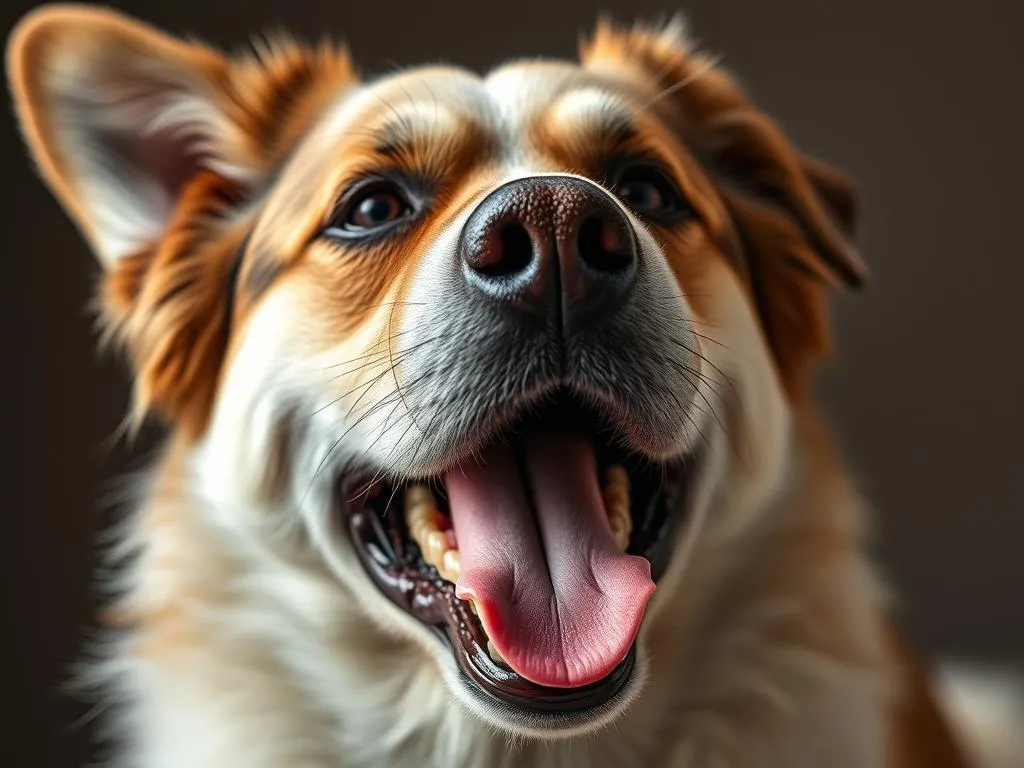
Open mouth breathing in dogs can be a concerning behavior for pet owners. While some dogs may naturally breathe with their mouths open, especially during exercise or in hot weather, there are instances where this can signal underlying health issues. Understanding when open mouth breathing is normal and when it becomes a cause for concern is vital for every dog owner.
Understanding Canine Respiratory Health
Anatomy of a Dog’s Respiratory System
The canine respiratory system consists of several key components, including the nasal passages, trachea, bronchi, and lungs. Air enters through the nostrils, travels down the trachea, and branches into the bronchi, which lead to the lungs. This system is designed to facilitate efficient gas exchange, allowing oxygen to enter the bloodstream while carbon dioxide is expelled.
In normal breathing, a dog’s respiratory rate ranges from 10 to 35 breaths per minute, depending on factors like age, breed, and activity level. Healthy dogs breathe through their noses, using their diaphragm to pull air in and out. When a dog breathes through its mouth, it can indicate distress or an attempt to cool down.
Signs of Healthy Breathing in Dogs
Normal breathing in dogs should be quiet and unobtrusive. Indicators of a healthy respiratory system include:
- Nasal breathing: Dogs typically breathe through their noses.
- Regular rate: Breaths that are consistent in rhythm and rate.
- Lack of effort: Breathing should appear effortless, without any signs of strain.
If you notice changes in your dog’s breathing patterns, particularly open mouth breathing, it is essential to observe other symptoms that may accompany this behavior.
Causes of Open Mouth Breathing in Dogs
Environmental Factors
Several environmental factors can lead to open mouth breathing in dogs:
- Heat and humidity effects: Dogs regulate their body temperature primarily through panting. In hot weather, they may resort to open mouth breathing to cool themselves down.
- Allergens and irritants in the air: Dust, pollen, and smoke can irritate a dog’s airways, leading to discomfort and open mouth breathing.
Health-Related Factors
Various health issues can cause a dog to breathe with its mouth open:
- Respiratory infections: Conditions like kennel cough or pneumonia can impair normal breathing, prompting dogs to open their mouths to take in more air.
- Allergies and asthma: Dogs can suffer from allergies similar to humans, which may manifest as respiratory distress.
- Obesity: Excess weight can place pressure on a dog’s diaphragm, making it harder for them to breathe normally.
Physical Conditions
Certain physical conditions may predispose dogs to open mouth breathing:
- Brachycephalic breeds: Dogs like Bulldogs and Pugs have shorter snouts, which can lead to breathing difficulties and an increased likelihood of open mouth breathing.
- Heart disease: Conditions affecting the heart can lead to respiratory issues, as the heart struggles to pump blood effectively, impacting oxygen levels.
- Anemia: Low red blood cell counts can result in insufficient oxygen transport, leading dogs to breathe with their mouths open to compensate.
Recognizing Open Mouth Breathing
Symptoms to Watch For
When monitoring your dog, pay attention to breathing patterns that deviate from the norm:
- Panting: While panting is common, excessive panting can be a sign of distress.
- Accompanying signs: Look for lethargy, coughing, wheezing, or changes in appetite, which could indicate underlying health issues.
Differentiating Between Normal and Abnormal Open Mouth Breathing
Differentiating between normal and concerning open mouth breathing is crucial:
- Normal panting: Often occurs after exercise or in warm environments and typically resolves quickly.
- Concerning symptoms: If your dog’s breathing is labored, accompanied by lethargy, or persists without an obvious cause, it may warrant further investigation.
Context matters; for instance, if your dog has just finished playing fetch and starts panting, this is usually normal. However, if they are panting heavily while resting, it could be a cause for concern.
When to Seek Veterinary Care
Signs That Require Immediate Attention
Certain symptoms accompanying open mouth breathing should prompt immediate veterinary attention:
- Blue-tinged gums: Indicates a lack of oxygen and requires urgent care.
- Extreme lethargy: If your dog is unusually tired and unresponsive, it’s a red flag.
- Persistent coughing or wheezing: These could signify a serious respiratory condition.
What to Expect at the Vet
When you take your dog to the vet for open mouth breathing, several diagnostic procedures may be performed:
- Physical exams: A thorough examination can help the vet identify any obvious issues.
- X-rays: Imaging may be necessary to assess the lungs and heart.
- Blood tests: To check for infections, anemia, or other underlying conditions.
Understanding these procedures can help alleviate any anxiety about the visit and ensure you are prepared for potential treatments.
Treatment Options for Open Mouth Breathing
Home Care and Management
For mild cases of open mouth breathing, several management strategies can help:
- Cooling down: Ensure your dog has access to shade and fresh water, especially in hot weather.
- Hydration: Keeping your dog hydrated can help alleviate some symptoms.
- Environmental adjustments: Using air conditioning or fans can help maintain a comfortable temperature.
Medical Treatments
If your dog’s open mouth breathing is due to a medical condition, your veterinarian may recommend several treatments:
- Medications: Depending on the diagnosis, medications such as bronchodilators or anti-inflammatories may be prescribed to ease breathing.
- Surgical options: In cases involving structural issues, such as airway obstructions, surgery may be necessary to correct the problem.
Always follow your veterinarian’s advice regarding treatment and care, as they will provide a plan tailored to your dog’s specific needs.
Preventive Measures
Regular Health Check-Ups
Routine veterinary visits are essential for early detection of health issues. Regular check-ups can help catch any potential problems before they develop into more significant concerns.
Weight Management
Maintaining a healthy weight is crucial for your dog’s overall health. Strategies include:
- Balanced diet: Feed your dog high-quality food appropriate for their age and energy levels.
- Regular exercise: Engage in daily physical activity to help keep your dog fit and healthy.
Environmental Control
Taking steps to keep your dog comfortable can also prevent open mouth breathing:
- Keeping dogs cool: In hot weather, avoid strenuous activities during peak heat hours and always provide access to water.
- Reducing allergens: Regular cleaning and using air purifiers can help minimize allergens in your home.
Conclusion
Understanding open mouth breathing in dogs is essential for every dog owner. This behavior can range from a normal response to heat and exercise to a sign of underlying health issues. By recognizing the causes, symptoms, and treatment options, pet owners can better advocate for their furry friends’ health.
Always remain vigilant and proactive in monitoring your dog’s health. If you notice any concerning signs, don’t hesitate to seek veterinary advice. Your dog’s well-being is worth the effort.
FAQs
Common Questions About Open Mouth Breathing in Dogs
Is open mouth breathing always bad?
Not necessarily. Open mouth breathing can be normal during exercise or in hot conditions. However, if it occurs at rest or is accompanied by other concerning symptoms, consult your veterinarian.
Additional Concerns Related to Dog Breathing
What should I do if my dog is breathing heavily?
Evaluate the situation. If your dog has been active or is in a warm environment, they may just be cooling down. However, if the heavy breathing persists or is associated with other symptoms, contact your veterinarian immediately.









